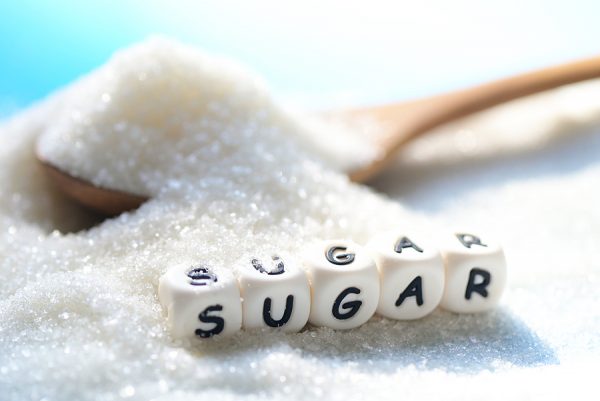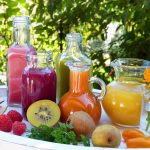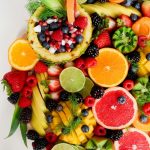Not all sugars are the same.
We have natural sugars, those that are found in fruits and vegetables. Then we have added sugars. These are the ones added to processed foods like juices, soft drinks, pastries, breakfast cereals and other packaged foods.
Added sugars make up for most of our daily sugar intake, and they come under the guise of many different names. Sugar, cane juice, syrup, dextrose, fructose, corn syrup, high-fructose corn syrup, maltose and lactose are just a few.
One of the most insidious added sugars today is fructose. Back in the early 1900s, it was a very small part of our diet. Americans only consumed about 16 grams of fructose per day, and that came mostly from whole plant sources; fruits and vegetables.
In other words, it was in its natural, unprocessed state. So the plant fibers slowed down the body’s absorption of the sugars.
Jumping ahead to today, we consume four or five times that amount in the form of refined sugars in breakfast cereals, pastries, sodas, and fruit drinks. And it’s wreaking havoc on our health.
Sugar: It’s Not Only About Insulin Resistance and Diabetes
Most people know the link between sugary foods, insulin resistance, diabetes and obesity. But it might surprise you to learn that eating too much sugar is also bad for your heart. And your liver.
Among other things, getting too much sugar damages your arteries, increases triglycerides and raises inflammatory markers linked to heart problems. It also fills your bloodstream with oxidized LDL particles. These are the type of LDL that slip into your arteries and cause plaque buildup.
So it’s no wonder added sugars are associated with a higher risk of heart disease, stroke and higher cardiovascular death rates!
And guess what?
Today’s epidemic of non-alcoholic fatty liver disease (NAFLD) is coming directly from all of the sugary foods and beverages people are consuming. In fact, fructose is often pointed out as one of the worst liver threats today. That’s because it stops the liver’s ability to absorb fat. Glucose doesn’t do that. Only fructose.
Just consider this: Alcohol has been linked to liver problems for centuries. But NAFLD was so uncommon that it wasn’t even given a name until 1980. Coincidentally high fructose corn syrup was introduced to the food and beverage industry in the 1970s.
These days, NAFLD is the second most common cause of liver transplant and accounts for about 34% of people on the liver transplant waiting list. Another 40% of people on the transplant list have alcohol related liver disease. So the gap between the two has narrowed dramatically in a very short time.
Just imagine the risk people are putting on their livers if they are heavy drinkers of both alcohol and high fructose beverages!
How can Fructose be Bad if it’s in Fruit?
Getting too much fructose from fruit is hard to do for several reasons.
When you bite into a fresh fruit, you’re eating a synergistically nutritious whole food. All of the elements – the vitamins, minerals, water, antioxidants and other nutrients – work together to provide a profound health benefit.
Plus, fruit comes with all-important fiber. This slows down digestion of the sugar so that you don’t end up getting wildly high spikes of blood glucose and insulin.
When you eat a processed food with fructose in it, you get an entirely different response. The food itself generally has no nutritional value. No fiber. Nothing at all to offset the fructose load.
The American Heart Association recommends limiting added sugars to about six teaspoons for women and around nine teaspoons for men. (To put this in perspective, the average U.S. adult consumes 17 teaspoons of sugar daily.)
Now, each teaspoon is four grams of sugar. So if your soft drink says it has 44 grams of sugar, that’s 11 heaping teaspoons. It’s basically 12 ounces of liquid with carbonation, flavor and 11 heaping teaspoons of sugar. You wouldn’t put 11 teaspoons of sugar in a glass of water and give it to your kid or grandchild would you?
Putting a bunch of sugar in water might be good for hummingbirds, but it’s not good for humans. So be sure to read labels and compare the sugar content with the serving size.
SOURCES:
Abundance of fructose not good for the liver, heart. Harvard Health Publishing: Harvard Heart Letter. Sept 2011.
DiNicolantonio JJ, Lucan SC, O’Keefe JH. The Evidence for Saturated Fat and for Sugar Related to Coronary Heart Disease. Prog Cardiovasc Dis. 2016 Mar-Apr;58(5):464-72.
Kelly RK, Tong TYN, Watling CZ, Reynolds A, Piernas C, Schmidt JA, Papier K, Carter JL, Key TJ, Perez-Cornago A. Associations between types and sources of dietary carbohydrates and cardiovascular disease risk: a prospective cohort study of UK Biobank participants. BMC Med. 2023 Feb 14;21(1):34.
Ludwig J, Viggiano TR, McGill DB, Oh BJ. Nonalcoholic steatohepatitis: Mayo Clinic experiences with a hitherto unnamed disease. Mayo Clin Proc. 1980 Jul;55(7):434-8.
Wong RJ, Singal AK. Trends in Liver Disease Etiology Among Adults Awaiting Liver Transplantation in the United States, 2014-2019. JAMA Netw Open. 2020 Feb 5;3(2):e1920294.
Jensen T, Abdelmalek MF, Sullivan S, Nadeau KJ, Green M, Roncal C, Nakagawa T, Kuwabara M, Sato Y, Kang DH, Tolan DR, Sanchez-Lozada LG, Rosen HR, Lanaspa MA, Diehl AM, Johnson RJ. Fructose and sugar: A major mediator of non-alcoholic fatty liver disease. J Hepatol. 2018 May;68(5):1063-1075.
Added Sugars. American Heart Association. ©2023.
Get the Facts: Added Sugars. The Centers for Disease Control and Prevention. Last Reviewed Nov 2021.




